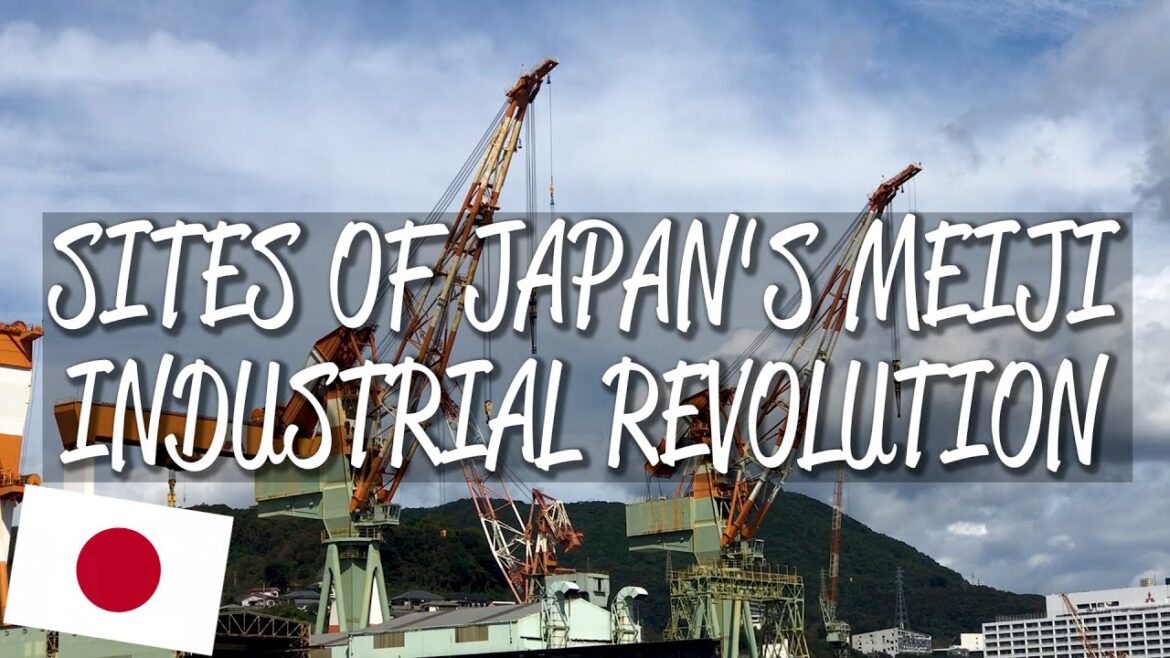This UNESCO World Heritage Site is covers a fascinating part of Japanese history. For two hundred years, Japan’s shogunate government kept the country isolated from the west. But in 1853, Commodore Matthew Perry forced open the government to foreign trade, using what’s known as gunboat diplomacy. Within a decade, the government had collapsed and the Meiji Emperor restored as the sole ruler of Japan. Fearing colonisation by the West, Japan’s new rulers embarked on a massive modernisation and industrialisation program, building railroads, factories, coal mines, dockyards, and much more besides. Much of this activity was concentrated in western Japan, around the city of Nagasaki, where we explored the 19th century Mitsubishi dockyards, and the famous Hashima coal mine island, also known as Battleship Island.
For more Japanese World Heritage sites:
For more industrial World Heritage sites:
Verla Groundwood & Board Mill: https://youtu.be/BTkm1HpvSpk
Rjukan-Notodden Industrial Heritage: https://youtu.be/4KfMZjG96yY
Engelsberg Ironworks: https://youtu.be/5ItI7K0jo7Q
Don’t forget to Like and Subscribe to see more of our UNESCO World Heritage Journey!
You can also follow World Heritage Journey on:
Twitter @whjourney
Instagram @joelontheroad
Facebook https://www.facebook.com/worldheritagejourney
Web https://www.worldheritagejourney.com
Music: Bensound.com – Happiness
Map Images (C) OpenStreetMap.org Contributors, www.openstreetmap.org
Dejima in Nagasaki Bay, Image CC-BY-SA-3.0 by PHGCOM on Wikimedia Commons, https://commons.wikimedia.org/wiki/User:PHGCOM
All other images Public Domain
Hey everyone, welcome to World Heritage Journey. Today, we’re at the Sites of the Meiji Industrial Revolution, at various locations around Japan. This World Heritage site covers nine separate locations around Japan. Each spot relates to Japan’s rapid industrialisation of the late 19th century, when railroads,
Factories, coalmines and shipyards were constructed at an astounding rate. But to really understand the site, you first need a little bit of context. For two hundred years, Japan was completely isolated. Foreigners couldn’t enter, Japanese couldn’t leave – under penalty of death.
That all changed in 1853, when US Commodore Matthew Perry sailed a fleet of warships into Tokyo Bay and demanded the Japanese open their ports to foreign trade. Within 15 years the shogunate government collapsed, and the Meiji emperor had their full powers restored, an event known these days as the Meiji Restoration.
Realising that the only way to avoid colonisation by foreign powers was rapid industrialisation, a frantic development program began – and that’s where this World Heritage site comes in. For our visit, we focused on the areas around the port city of Nagasaki in south-west Japan.
Here you can find the Mitsubishi dockyard, once one of the largest shipbuilding facilities in Japan. It was here that the new warships were built, including the famous Yamato flagship of World War 2. Many of the dockyards here are still in use – mainly for building cruise ships these days,
And there’s also an incredible cantilever crane over 100 years old, that’s still in working order! About 15 kilometres offshore is the famous Battleship island, site of the former Hashima coal mine. This abandoned island was one of Japan’s largest and most productive coal mines, and it was
High-technology mines like this that propelled Japan forward into the industrial era. It’s actually mind-boggling how many workers and communities they managed to fit on the island to keep the mine running – at one point over 5000 people lived there!
But there’s also a dark history here too, as sadly many Chinese prisoners and Korean conscripts suffered brutal treatment in the mines during the 1930s and 40s. And if you’re wondering about the name Battleship Island, well, it just kind of looks like a battleship!


4 Comments
my son the historian ( age 12 😀 ) was telling me all abut this yesterday. shocking behaviour on the part of the allies 🙁 I will show him your vlog 🙂
very untrue
"..and demanded that the Japanese open their ports to foreign trade."
Well, that's factually correct but it would be more accurate to say, "trade with the USA". Commodore Perry was operating only on the behalf of the US government and nobody else.
https://www.youtube.com/watch?v=QMBZul4_ya0 this is about waht Japan did to Koreans please sea this and know